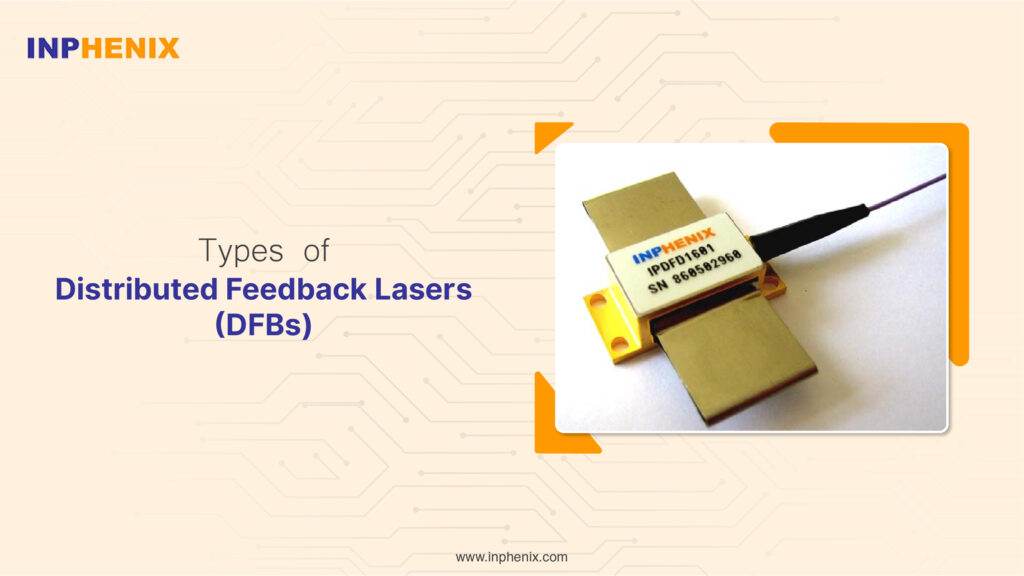
The Distributed Feedback Laser, also known as the DFB laser diode, is a type of laser widely used for high-capacity long-distance transmission. Fiber-optic sensing, laser radar, fiber optical communication, barcode readers, disc reading, and laser scanning are just a few of the major applications of distributed feedback lasers.
The key characteristics that have made DFB lasers so popular in all of these applications are their low threshold current, high efficiency, and single wavelength property. However, many of you are unaware that DFB lasers are available in a variety of configurations. What are the various types, and how do they work? Let us explore all these things in the blog.

According to Wikipedia, a Distributed Feedback Laser is a type of laser diode in which the active region contains a periodically structured diffraction grating element. In layman’s terms, a DFB laser is a laser with a diffraction grating above the active region that acts as a Bragg reflector. Besides that, the distributed feedback laser is less susceptible to temperature variations and has a faster modulation speed.
Also, in a distributed feedback (DFB) laser, the grating and reflection are often continuous along the cavity and not just at the ends of mirrors. This will eventually change the laser’s modal behavior and make it more stable.
Distributed Feedback Lasers are classified into two types: fiber lasers and semiconductor lasers. Let’s take a closer look at these two distinct types to better understand their operation and characteristics.
Fiber DFB lasers are a type of distributed feedback laser in which the entire resonator is made up of a periodic structure that acts as a distributed reflector in the laser’s wavelength range. This structure consists of a series of couplings of two Bragg gratings with optical gains within the gratings.
Fiber Bragg gratings inside the fiber DFB laser act as mirrors around the gain medium to form an optical resonator. This resonator traps optical energy within it for further amplification. Simultaneously, it enables the out-coupling of a portion of optical energy in one direction via a partially transparent mirror.
The laser beam is an out-coupled portion of optical energy that can be used for a variety of purposes. Among the most common applications of fiber distributed feedback laser are:
1. Cutting & welding
2. Marking
3. Quenching
4. Precision processing
5. Scientific Research
Using a high doping concentration of fiber, one can achieve high efficiency in a fiber DFB laser. It is, however, more difficult to achieve.
A semiconductor DFB laser is another type of distributed feedback laser. A p-n junction doped in a single crystal of a suitable semiconductor forms the smallest type of laser.
When the diodes in a semiconductor distributed feedback laser are biased forward, holes are injected into the p-side of the junction. At the same time, electrons are injected into the n-side. When holes and electrons collide in the junction region, radiation is produced.
Moreover, when the optical gain exceeds the loss in the junction layer, stimulated emission takes place. In addition to that, a semiconductor DFB laser’s junction layer is typically a few micrometers thick, and the crystal’s end faces are partially reflective to form an optical resonator.
Semiconductor laser applications include:
1. Satellites
2. Laser printers
4. CD player
5. Measuring instruments
Moreover, semiconductor DFB lasers are typically more efficient than fiber distributed feedback lasers. The efficiency can be increased even further by simply lowering the temperature.
Inphenix is a US-based light source manufacturer specializing in optical devices such as swept-source lasers, distributed feedback lasers, gain chips, Fabry Perot lasers, and VCSELs. Our products are cutting-edge, affordable, and compatible with a wide range of devices.
